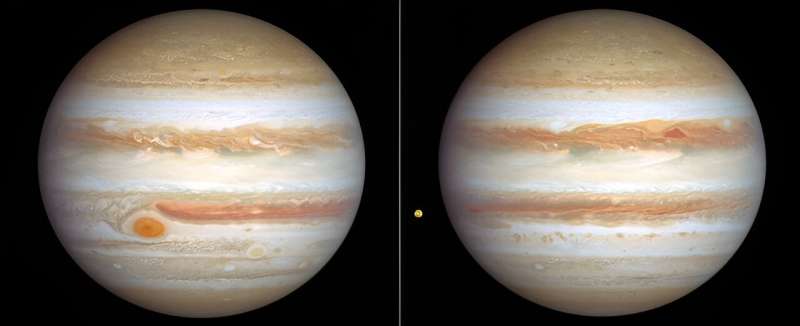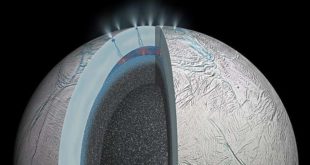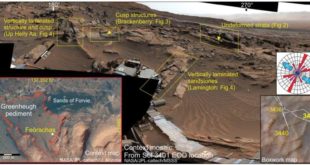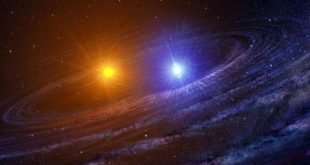
The largest and nearest of the giant outer planets, Jupiter’s colorful clouds present an ever-changing kaleidoscope of shapes and colors. This is a planet where there is always stormy weather: cyclones, anticyclones, wind shear, and the largest storm in the solar system, the Great Red Spot.
Jupiter has no solid surface and is perpetually covered with largely ammonia ice-crystal clouds that are only about 48 kilometers thick in an atmosphere that’s tens of thousands of kilometers deep and give the planet its banded appearance. The bands are produced by air flowing in different directions at various latitudes with speeds approaching 560 kilometers per hour.
Lighter-hued areas where the atmosphere rises are called zones. Darker regions where air falls are called belts. When these opposing flows interact, storms and turbulence appear.
Hubble tracks these dynamic changes every year with unprecedented clarity, and there are always surprises. The many large storms and small white clouds seen in Hubble’s latest images are evidence for a lot of activity going on in Jupiter’s atmosphere right now.
Provided by
European Space Agency
Citation:
Hubble tracks Jupiter’s stormy weather (2024, March 14)
retrieved 14 March 2024
from
This document is subject to copyright. Apart from any fair dealing for the purpose of private study or research, no
part may be reproduced without the written permission. The content is provided for information purposes only.
 Innovation Discoveries Latest Scientific Discoveries in Innovation
Innovation Discoveries Latest Scientific Discoveries in Innovation



